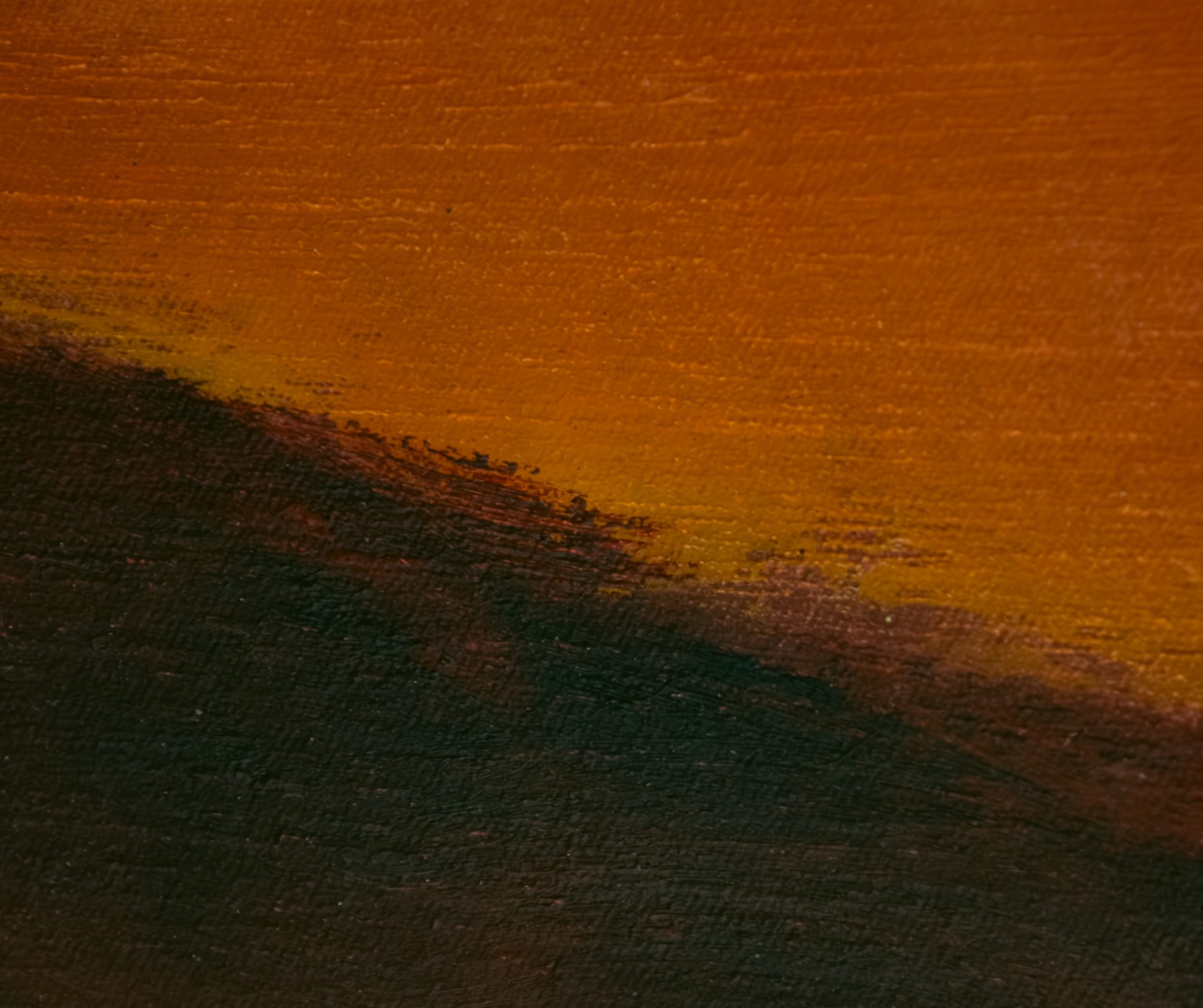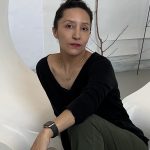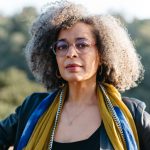What is the relationship between artmaking and the struggle for a world without prisons? This summer, Inquest convened a conversation on this question between abolitionist theorist Gina Dent and Maria Gaspar, a Chicago-based artist who has spent years engaged in collaborative artmaking with incarcerated people. Later this month, Gaspar will premier her first solo exhibition on the West Coast, Compositions, as part of a new arts-based initiative called Visualizing Abolition. Gaspar’s show, which features video footage and debris salvaged from a wing of the Cook County Jail, encourages its audience to imagine how we might build a more liberated world, and how to shift our social attachments away from incarceration.
In this conversation, which has been condensed and edited for clarity, Dent and Gaspar reflect on changing practices of presentation and collection at museums, collaborations with incarcerated people, and what it means to make art for an abolitionist future.
Gina Dent: Maria, you’re someone who has been involved in thinking about the issues of incarceration and artmaking for a very long time. To start, I wonder if you can speak about what this moment feels like. There’s a real, popular interest in abolition. Does that feel more hopeful? Does it bring dangers?
Maria Gaspar: My journey and experience with my community, and all the different communities that I’ve worked with, makes me cognizant of what comes with that popularization. I think we’re all trying to figure out the depth of the commitments being made today. How much of it is rhetoric? How much of it is really trying to do something meaningful and deep and different. In my practice, and in my work with others, I’ve been thinking a lot about abstraction—about sound and images that are perhaps unusual.
When I first started to do projects about incarceration, conversations about abolition were happening. You, Angela [Davis], and so many others have been shaping that conversation for a long time. But getting institutional support to do large-scale, community-based art was very difficult. When I started to do projects at the Cook County Jail through the 96 Acres Project, I remember local organizations who had a hard time imagining supporting art and social justice projects. It didn’t fit the canon of art as we know it. Or something like that. Now, there is awareness that feels like its opening doors for artists.
GD: I’ve known your work for some time. And you were part of the exhibition that was our first for Visualizing Abolition, Barring Freedom. Your work—“On the Border of What is Formless and Monstrous”—was so powerful because of the way it caused one to sit in the space. You could see the video and hear the sounds around Cook County Jail. I wonder if you could say a little bit about that work, specifically?
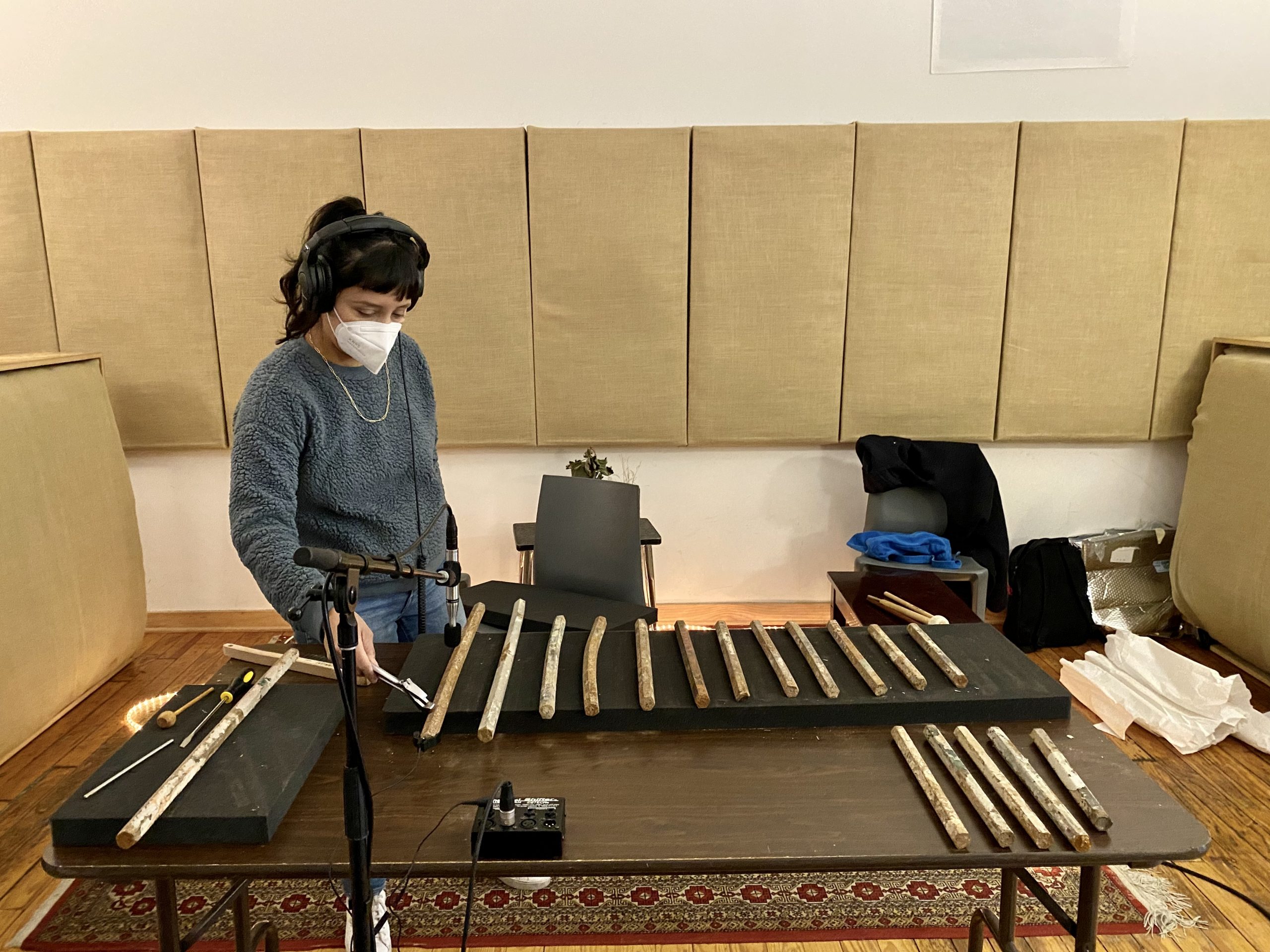
MG: Yes, so it was a video and sound installation that consisted of a pan of the county jail wall and the northern facing wall, which is the oldest part of the jail. And you pan past it very slowly. What you hear as part of the video installation are sounds from the interior of the jail that I recorded. You can hear the ventilation systems, different kinds of ambient sounds. There’s the sound of iron bars, and the sounds of detention, generally. I think people are familiar with those sounds. I also included recordings of folks during a yearly community carnival located at the perimeter of the jail. The carnival rides and games are stationed only twenty or thirty feet from the wall. I thought it was just so surreal to see hundreds and hundreds of people right next to the jail, yet not looking or being aware of it. Instead, the jail was made more invisible by these spectacular rides. I kept thinking about what the people locked up in Division One were seeing and hearing. But the community residents probably weren’t looking in and couldn’t see the people incarcerated there. Trying to talk about that tension has always been a big part of my work: What we’re confronting, who we’re seeing, and who’s not being seen, who’s looking and who’s not looking.
GD: I experienced so much while sitting with that piece during the very few days in which the exhibition was open. It was during a time when people had to mask, and it was difficult to be in public spaces. But I saw many people dwelling in your space for a very long time. And young people doing museum time in a way that I’m not always used to seeing. I feel like part of it had to do with the way that you layer and create textures of beauty and pain. There are sounds, of course, that you said are associated with being inside, but there are also the sounds of joy, and those are all mixed. And there’s not this experience of a one-note rendering—one vision of what that wall is meant to represent. That’s a real contrast with our cultural environment now—of fast-paced, quick, surface interrogations. Could you talk more about that as a challenge? What does it mean to treat incarceration as a language of more expansive, more critically engaged, more complex ideas?
MG: My background in artmaking was through murals. Chicago is a city that is really known for its rich art and activist history, and murals are a big part of that. I was mentored by muralists, who were willing to invite me into their homes. What I really appreciated about those mentors was that they were responding to their communities. Sometimes it was an immediate artistic response because something happened in the neighborhood—and they needed to identify a wall or other cultural space to talk—or make art—about this issue. There’s something powerful about that desire, or that urge to respond: to identify that feeling and to move with it. But there was not a consistent rhythm. It had ebbs and flows. That experience taught me about being responsive in the moment but also giving myself moments for slowness to sort out what is unknown and moments when I feel totally certain. And all of that is okay to do.
More from our decarceral brainstorm
Every week, Inquest aims to bring you insights from people thinking through and working for a world without mass incarceration.
Sign up for our newsletter for the latest.
Newsletter
GD: I want to think about this also in terms of what is politically necessary now, precisely because of the discomfort of dealing with those things that we can’t know. Something I’ve certainly experienced as an abolitionist is the problem of never knowing completely and still being asked to deliver answers—even though what I’m most interested in doing is helping to develop the questions. I want to be observant and to be slow and to listen. I worry that one of the problems with this moment of celebrating art and abolition could be that sometimes there’s a specific kind of work that’s supposed to somehow meet the task of confronting the prison–industrial complex. But for the Visualizing Abolition project, we’re really thinking about other kinds of work, and other ways of communicating and other ways of being, with artists in collaboration, with young people trying to move against this period of deep anti-intellectualism.
We know that prisons and other carceral environments are harmful. Sometimes, we operate as if that’s the full story. And of course, when we try to do this work, and we do the parts that are less visible, like just communicating with someone inside on a regular basis or supporting a family member, or doing your kind of art practice, it’s not the type of work that can be easily summarized or even represented. We certainly have some answers, and we know what some wrong answers are. But I’m interested in how you try to set up different sets of problems as an artist. What does it mean to try and focus on issues that people aren’t paying attention to?
MG: I feel like there have been a lot of moments when opportunities didn’t look like opportunities at first. They look like challenges or hurdles, and then there’s moments that grow out of it to create something new. I did a project called “Radioactive Stories from Beyond the Wall” a couple of years ago. I worked with two groups of men at Cook County Jail. We had a room that was very limited. But there was so much that we learned together in that space about what it meant to generate artwork, to feel some sense of freedom, to experiment, and to produce creative work that was fundamentally different from the conditions that the group was experiencing while they were incarcerated. Some of that was generated by dancing, moving our bodies together in ways that were in contrast to confinement. I think moments like that were opportunities to think about what that meant, and how to produce meaningful moments and art.
We also spent a lot of time talking about what we were going to make. And while there was a general idea early on, we were very aware of not predetermining what our narratives were going to be about. That can be hard, because this kind of work doesn’t fit in easily with the traditional art school practice. And I got questions from folks, who wanted me to quantify that work. They wanted to know the impact. They’ll ask: Where are the numbers? Where is the data? I have struggled with that, and I still struggle with that today. But I think it’s gotten me to reflect on what it means to be doing this work, and what it looks like to push back, gently, and ask something different of people. You’ve got to flip it. I want to help create those conditions where people can feel free and where they can feel creative and experimental, and that they don’t have to abide by the rules that are often, you know, preconceived.
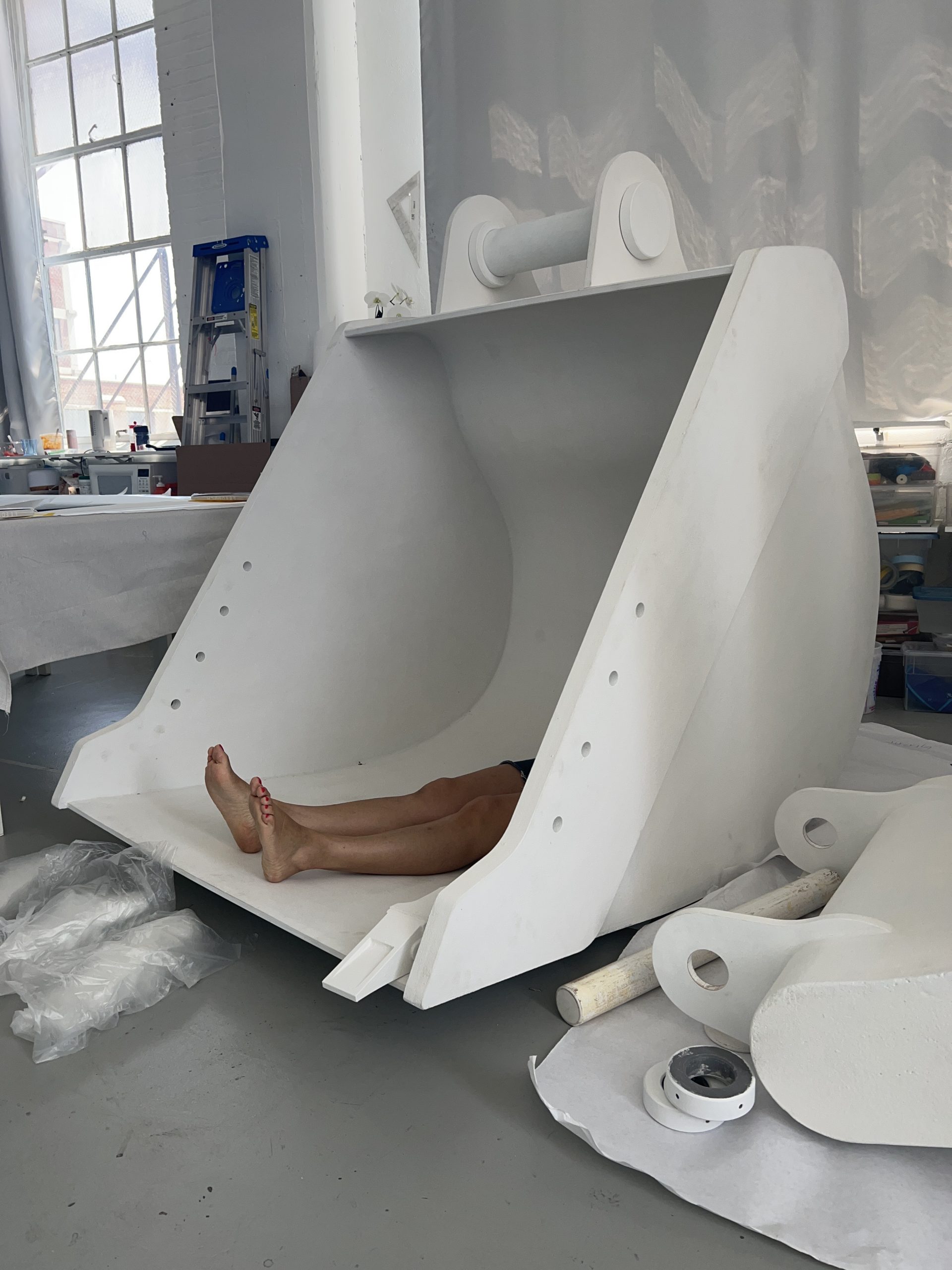
GD: I’m thinking of Leanne Betasamosake Simpson and Robyn Maynard’s book, Rehearsals for Living. What you’re describing resonates. Of course, it’s not only people inside, as you’ve described, who need to learn to move their bodies differently. All of us are struggling, especially younger people, to feel connected to our bodies, to move in an abolitionist way, and to understand and think freedom in an embodied sense. But it seems to me like these types of experiences that we’re able to have are rehearsals. They are ways of practicing what we would actually want to be able to sustain day in and day out, but that we have very few spaces to actually experience today. I want to know from you, though, as you’ve evolved as an artist and seen the art world evolve to receive your work, what changes you’ve seen in galleries and museums. Is the introduction of these abolitionist works into these spaces transforming them?
MG: I hope so. As somebody who teaches, I have certainly seen my students become much more engaged and interested in issues of abolition. And I do feel like they want to connect with other people, and they have a desire and a yearning to be part of something bigger than themselves. That makes me excited. In terms of galleries and museums, I have seen more of an interest in showing the work of artists who are more socially engaged. But I would like for people to really commit to that, not just in the form of an exhibition, or a weekend program for teachers. I want to see them sustained throughout the whole institution. It’s reflected in salaries and who they’re hiring, and, of course, who they’re collecting. This is a good moment for institutions to begin thinking about what all that looks like—who is in the collection, what kind of narratives are being told, and what’s missing. There’s a lot missing, of course, and I hope that institutions don’t shy away from that. Like you, I’m waiting to see. I’m looking, I’m watching.
GD: I’ve been thinking about how stuck we are in this conversation about mass incarceration, instead of being with abolition. I’m grateful that the mass incarceration paradigm has opened up so many people to the problem of carceral environments more generally. But it is also an easier point of entry, and it seems to have a more ready set of solutions. I think the issues that you’ve raised have made me think about how we need to work against the surface. That involves deeper questions.
When I think about it from a historical point of view, I think about all the scholarship on slavery. It’s swung in various directions over the years. First, slavery was being described as just one thing—the total oppression by people of one race. Then it became more about resistance. More recently, there’s been lots of work trying to document the experiences that escaped the archive of slavery. We’ve continued to evolve. Trying to do it in real time, while we’re living with the experiences of carcerality, and to try to be as nuanced in those conversations as we’re attempting to be with history feels to me like what it means to try to be an abolitionist. It’s one of the reasons that for me work like yours is so valuable. I was going to say to the movement, but, really, it’s to life. Because we need help in doing that. And sometimes it’s people inside that can help us the most.
Header image: Steve Johnson/Unsplash
